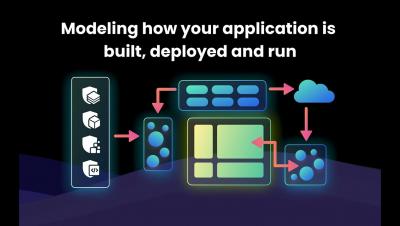Security | Threat Detection | Cyberattacks | DevSecOps | Compliance
Snyk
Top 5 security concerns for infrastructure as code
Infrastructure as code (IaC) has changed how we deploy and manage our cloud infrastructure. Instead of having to manually configure servers and networks with a large operations team, we can now define our service architecture through code. IaC allows us to automate infrastructure deployment, scale our entire fleet of servers, document a history of changes to our architecture, and test incremental changes to the network.
How to strengthen security in your CI/CD pipeline
DevSecOps refers to the integration of security practices into DevOps process. With modern development cycles, you can't afford to leave security until the end. It should be baked in at every stage. Continuous integration, continuous delivery (CI/CD) security is a big part of the DevSecOps picture. It's critical that you secure your pipelines and that the automated systems used to implement CI/CD are not vulnerable to attack.
Session management security: Best practices for protecting user sessions
Session management security is an essential component of web application development. It safeguards user sessions and prevents unauthorized access. Managing sessions secures the confidentiality, integrity, and availability of sensitive user data. It also protects user privacy at large — which is essential to maintaining user trust in an application. When we manage sessions securely, we establish processes to destroy session tokens when users log out or their session ends.
Building a security-conscious CI/CD pipeline
Continuous integration (CI) and continuous delivery (CD) has become a ubiquitous practice for DevOps teams. The CI/CD process focuses on building and deploying new applications or releasing updates to already-deployed workloads. As a result, most CI/CD efforts focus on enhancing development speeds. However, CI/CD practices can accomplish much more than enabling workload deployments.
The importance of verifying webhook signatures
Webhooks are a callback integration technique for sending and receiving information, such as event notifications, in close to real-time. Webhooks can be triggered by application events and transmit data over HTTP to another application or third-party API. You can configure a webhook URL and connect external participants to customize, extend, or modify workflows. Webhooks may or may not be signed.
Using insecure npm package manager defaults to steal your macOS keyboard shortcuts
Malicious npm packages and their dangers have been a frequent topic of discussion — whether it’s hundreds of command-and-control Cobalt Strike malware packages, typosquatting, or general malware published to the npm registry (including PyPI and others). To help developers and maintainers defend against these security risks, Snyk published a guide to npm security best practices.
Mimic your mental model with Project Collections
At Snyk we’re constantly trying to improve how you can work with Projects at scale. To continue the journey, we’ve been furthering how you can organize your Projects. There are nearly limitless ways to organize projects outside of Snyk because there is no standard mental model that is used by everyone, for example, some organize projects as mono-repos, and others as application components.
Maximizing IAM security with AWS permissions boundaries and Snyk
In today's rapidly evolving cloud landscape, managing permissions and ensuring robust security controls are essential for organizations utilizing Amazon Web Services (AWS). AWS Identity and Access Management (IAM) is crucial in managing permissions to access AWS resources. While IAM provides granular control over permissions, AWS IAM permissions boundaries offer additional security and flexibility for fine-tuning access controls.
Research with Snyk and Redhunt Labs: Scanning the top 1000 orgs on GitHub
Open source code is a vital aspect of modern development. It allows developers to increase their application’s functionality, while reducing overall development time. However, the system isn’t perfect. The nature of third party software and it’s dependencies often creates opportunity for security vulnerabilities to lurk in libraries and downloads.










